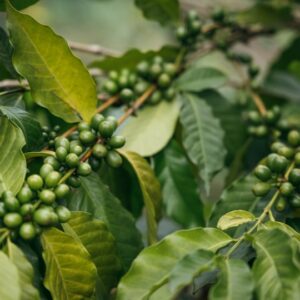Coffee Farms and the Rise of Green Bean Cultivation
Introduction: Vietnamese agriculture is a tapestry of traditions, innovation, and natural abundance. Amidst this rich mosaic, coffee farms stand as a testament to the nation’s prowess in cultivating one of the world’s most beloved beverages. As we delve into the verdant realm of Vietnamese coffee cultivation, we uncover the thriving coffee growing areas, the diverse ground conditions that contribute to its success, and the remarkable surge in the export of higher-grade Arabica green beans.
Coffee Growing Areas: Vietnam’s coffee-growing regions paint a picturesque landscape, spanning across the central highlands, the northern mountains, and the fertile plateaus. Buon Ma Thuot, Da Lat, and Kontum are renowned coffee capitals, with their altitudes, rainfall patterns, and soil compositions shaping the unique flavors that define Vietnamese coffee. These areas, known for their natural beauty, have become epicenters of coffee production, with lush landscapes marked by rolling coffee plantations.
Ground Conditions and Diversity: The success of Vietnamese coffee farms can be attributed to the diverse ground conditions that the nation offers. From the red volcanic soils of Buon Ma Thuot to the rich, well-drained soils of Da Lat, each coffee-growing region provides a distinct environment that influences the flavor profile of the beans. These varied ground conditions offer coffee cultivators the flexibility to experiment with different coffee varieties, ensuring a tapestry of tastes that cater to diverse consumer preferences.
Volumes of Export and Growth: Vietnam has consistently emerged as a global coffee powerhouse, making significant strides in coffee export volumes. The country ranks among the world’s top coffee exporters, with its robusta green beans making a substantial impact in international markets. In recent years, Vietnam has witnessed a remarkable growth in coffee exports, driven by both an increase in production and demand from coffee enthusiasts worldwide.
The Rise of Arabica Green Bean: While robusta beans have long been a mainstay of Vietnamese coffee exports, the nation’s coffee landscape is undergoing a transformation with the rise of higher-grade Arabica green beans. Arabica, celebrated for its delicate flavors and nuanced aromas, has found fertile ground in Vietnam’s coffee-growing regions. The nation’s dedicated efforts to cultivate and promote Arabica have led to an uptick in its production, expanding the portfolio of Vietnamese coffee offerings.
Conclusion: Vietnamese agriculture is an embodiment of the country’s resilience, ingenuity, and commitment to nurturing the land. Within this mosaic, coffee farms occupy a prominent place, with their coffee growing areas, diverse ground conditions, and evolving focus on higher-grade Arabica green beans. As Vietnam continues to make its mark on the global coffee stage, the journey of its coffee from farm to cup is a testament to the nation’s dedication to excellence and the art of cultivation.





